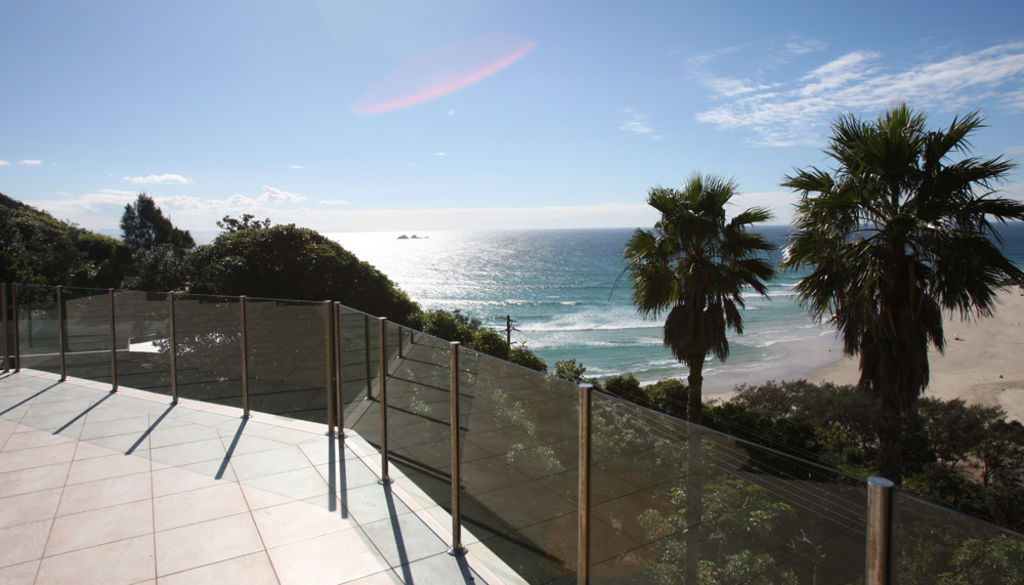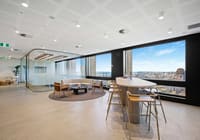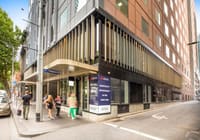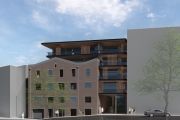
From the grotty back to the gritty: Byron Bay's master plan for development
Byron Bay has pulled off the urban planning coup of a generation with a planning scheme that will cut car numbers in the middle of the highly sought after resort town and make it easier for landlords to develop their properties.
It had to. The northern NSW hamlet known for its relaxed pace of life was choking. A town of 9400 residents was struggling to support an annual visitor population of over 1.4 million, half of whom were day trippers from neighbouring southeast Queensland.
The coastal town with one road in and one road out was getting gridlocked as visitors and locals alike drove through streets increasingly unable to cope.
 Byron Bay. Photo: Peter Braig
Byron Bay. Photo: Peter Braig
CBD shopping was becoming dominated by large retail chains – the only ones that could afford the rents – and the smaller, quirky stores that were part of character of the laid-back town, where anything fancier than thongs is classed as overdressing, were being pushed out.
“The town had gone from having this beautiful grittiness – the bit everyone loves – to heading a bit towards the grotty,” says Jane Laverty, the council’s head of economic development. “We needed to get back towards the gritty.”
Local real estate agent and founder of the Byron Bay Writers’ Festival Chris Hanley puts it more succinctly.
“We’re being loved to death,” he says.
Now there is hope that will change, and a key tool is parking. The masterplan Byron Shire Council passed in June proposes limiting car parking in the centre of the town – until now a free-for-all – and creating dedicated facilities on the town’s edge.
Large tourist buses, which parked in the town centre, would stop on the western edge, outside the disused North Coast Railway Line, and avoid the centre altogether. Wider footpaths and dedicated cycle lanes will increase the number of people walking in and out of shops, rather than driving past them in search of a car park.
For landlords, that reduces the cost burden of car parking they are required to provide under zoning laws. Owners of buildings zoned for three storeys that are limited to one or two storeys by current parking requirements could be freer to take them up to their full height, for example.
Award winner
“If you take the car parking equation out and it enables you to say ‘You don’t need carparking here’, you can realise the floor space benefits because the car parking is being provided elsewhere,” says David Brown, a former president of the NSW chapter of the Australian Institute of Architects and a resident involved in the master plan process.
“In a small walkable town you don’t need car parking underneath every single building. So that immediately says ‘let’s do other things’.”
It’s not there yet. Implementation will be crucial. But Byron Bay has taken the first step, a plan that will guide development over the next 20 years. And it is a lesson for other regional centres that are trying to balance the need to develop as a sustainable, alternative economic centre to Australia’s larger cities while keeping their own distinct identity.
A further boost to land owners could come through lower car parking requirements proposed by the master plan. Other proposed zoning changes will diversify the economic centre of the town by permitting residential and commercial premises on the upper levels of town centre buildings currently dominated by visitor accommodation facilities.
Little-used laneways will be activated to accommodate fine-grain retail, benefiting from the greater level of foot traffic.
Of course, even getting to this point was difficult.
“There are 30,000 residents in the shire and 60,000 opinions about every subject on the planet”, Brown says.
And that had stymied previous planning efforts.
“A lot of decision-making had been conducted in an ad hoc fashion, rather than in a coherent, coordinated way,” says Michael Cowdy of architecture firm McGregor Coxall, which led the master plan’s development.
But the master plan won the Australian Institute of Landscape Architects’ Communities award in June for the way it included residents and won support for the plan. Last month it won another award, RH Dougherty Award for Excellence in Communication at the NSW Local Government Awards.
Residents were wary of planned changes at first, but have come around to see the benefits, Brown says. Introducing paid parking was one example.
“All of a sudden people who thought it was a horrible thing – general community members – suddenly started to say ‘I can go into town and find a place’,” he says. “‘Having paid $50 to have a sticker on the car I get in and out of town quickly’. The short-term negatives that were seen with paid parking have become positives to many people.”











